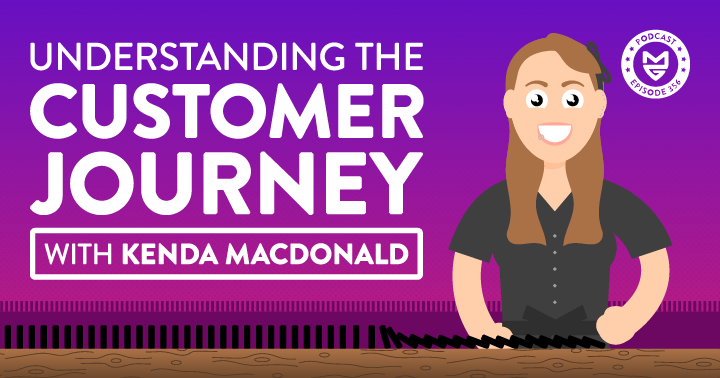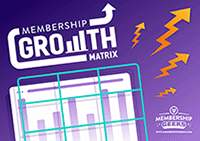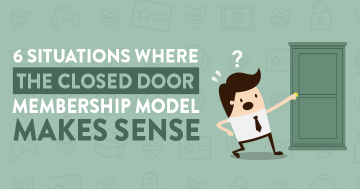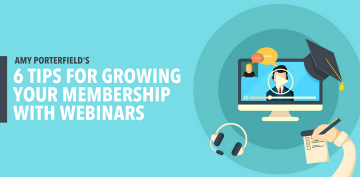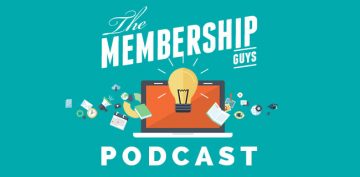Do you understand the buyer behaviour of your potential members?
The journey they go through before making the decision to join your membership?
Believe it or not, understanding the psychology behind buyer behaviour will help you grow your membership…
It will inform how you market to them, interact with them and ensure you give them exactly what they need at every stage of the buying process so they press the ‘join now' button when they're ready…
So how can you get this right?
We speak to Kenda Macdonald, CEO of Automation Ninjas, international keynote speaker, and author of the best-selling book, ‘Hack the Buyer Brain', to talk about behavioural automation and how you can leverage it for your membership.
Kenda has her own successful membership site, The Marketing Automation Academy, and is a forensic psychology major.
She explains that by learning how members make buying decisions, we can reverse engineer that journey to encourage signups…
Read on to hear what she has to say…
What does behavioural automation mean?
Behavioural automation is an umbrella term that can be split into two key areas:
- How the brain works (the nerdy psychology stuff): This is about understanding why people buy, their typical purchase behaviour, and any cognitive bias that goes into buying decisions.
- The physical behaviour people display: This is about looking at what people are interacting with on your website before they become a customer and using that information to inform your marketing, profiling, and segmentation. So this is anything that develops your overall understanding of what that person needs in order to become a customer. When it comes to memberships, this is about watching how people interact with your content so you can keep them consuming it and them coming back for more.
What a buyer journey looks like
The buying process can be broken down into different stages of awareness before purchase…
And if you’re clever about how you craft your content by creating things like lead magnets, we can learn about the stage they're at depending on the content they're interacting with.
So, for example, if someone lands on your site and signs up for a certain lead magnet, this gives you a clue as to how close they are to converting and the information they need next to help them make a decision.
Someone who is looking at your pricing information, however, isn’t going to need a lot of content about why your membership is a good idea as they’re already on board…
They just need a push towards buying from you specifically.
The problem with the funnel
Kenda is not a fan of the marketing funnel concept…
In her view, it’s mostly outdated and has given rise to what she calls “random acts of content.”
This is when people are so terrified that they’re not creating enough lead magnets, they just create one for the sake of it.
Funnels only work in commoditized industries…
And memberships aren’t in that type of industry.
Memberships are in an information/expertise industry instead.
So we need to adapt the way we provide information.
People are consuming more content than ever before, so they’re not all going to fall into the one marketing funnel to rule them all.
Instead, we need to create something that's more flexible, personable, and more catered to where someone is in their own personalized customer journey.
How do you move past the funnel?
For those who have been holding onto the funnel concept for dear life, don’t worry, Kenda has got your back…
Her first tip is to start with the awareness journey.
With this, everything can be reverse-engineered from the purchase point with a little help from neuroscience…
What we know about the brain has increased dramatically over the past ten to 15 years…
Professor Brian Knutson and his colleagues at Stanford University did a study where they put people in an FMRI scanner and monitored them making purchases.
During the study, participants were shown a series of products, given an arbitrary amount of money, and asked: would you buy this product?
It was a simple yes or no button, and the brain was scanned during this decision.
When people saw the product, the reward centres of the brain lit up like a Christmas tree, which is what you expect to see…
That's because when you look at products or services you want, the brain emulates having them and gives you a little rush of dopamine to make you want that thing.
But it was when pricing was thrown into the mix that things got interesting.
Prefrontal cortex activation (the part of the brain responsible for decision making) was expected, but what happened was the pain center of the brain lit up instead.
Long story short – our brains are not evolved to deal with pricing, and it actually inspires a pain-like response.
The purchase formula
So, what does this tell us?
The neuroscientists gave us what’s known as the purchase formula.
This is the net value of a product (so the likelihood of someone purchasing) equals the amount of reward activation that the brain gets when it sees your product, minus the amount of pain activation associated with pricing.
Net value = reward activation – pain activation
While it may seem obvious, your products or services need to trigger more reward activation rather than pain.
The good news is there are plenty of ways to activate that reward sensor through content and the information you put out for your membership site.
But we should be clever about the type of content we push out…
And make sure it arrives in front of potential members at the right stage in their journey.
The 5 stages of awareness
According to Eugene M. Schwartz in his book Breakthrough Advertising, we all go through 5 stages of awareness before making a decision on whether or not to purchase a product, as below:
- Completely unaware: The customer doesn’t know why they need you or your product.
- Problem aware: The customer is aware there’s a problem but doesn’t know your product is the solution.
- Solution aware: Customers are aware of solutions but are still unaware that your product is the solution.
- Product aware: The customer knows there’s a product you offer but isn’t ready to commit.
- More aware: The customer knows about your product, knows it will solve their problem, and wants it.
If you understand these stages, it then becomes a lot easier to create lead magnets and the appropriate follow campaign to address each stage.
And Kenda has very kindly provided a completely free workbook to help you incorporate these awareness stages into your content strategy.
The problem with using scarcity
A common tactic to get people to sign up for a membership is to use scarcity…
You know the drill…
Limited places available. Join now!…
Doors close in 24 hours!…
But scarcity messages like these are wrong to use…
Do they work? Yes. Should you use them? No.
The problem with scarcity tactics is that they play on cognitive biases and take advantage of an error in decision-making…
So people will make a snap judgement…
And when you rush into a purchase decision based on scarcity, you make an error in judgment.
So, if you use this tactic, be prepared for a world of buyer’s remorse afterwards…
In other words, the members who join your site due to scarcity are not likely to stick around long!
People consume content to learn and make better choices…
So don’t trick them into making what’s potentially the wrong choice for them!
How Kenda uses automation for The Marketing Automation Academy
How do you use automation in your own membership?
Kenda utilizes a few different tactics, including:
- Lead magnets: She offers free things for people to sign up for, which leads to an email series. These are based around the five stages of awareness.
- Audience profiling: While it may sound creepy, Kenda’s membership tracks the types of content people are interacting with and based on that, they will get dropped into the right membership sales series based on where they are in their customer journey.
- Webinars: Kenda sends out an automated follow-up series to attendees. Webinars will always cover something covered in the membership and so follow-up emails highlight where they can get extra information if they want it. This is her highest-converting tactic.
Above all, she makes sure that the content people receive is helpful without being pushy.
No one’s pressured into signing up…
It’s all about providing value at every level of awareness, wherever they are in their customer journey.
Privacy laws and behavioural based automation
Recent changes in privacy laws have had an impact on the way we market our businesses…
The IOS 15 update that suppressed the email open pixel ended up telling us that 100% of Apple users opened their emails…
So it's only really skewed open rates, but that's always been a difficult metric to measure anyway.
This Apple update, combined with some of the new changes in GDPR have told us that people aren't comfortable being tracked and having their data exploited…
And that's not necessarily a bad thing as it's forcing us focus on more reliable metrics instead.
More from Kenda Macdonald
For more insights into the customer journey and behavioural automation, check out Kenda's work at:
